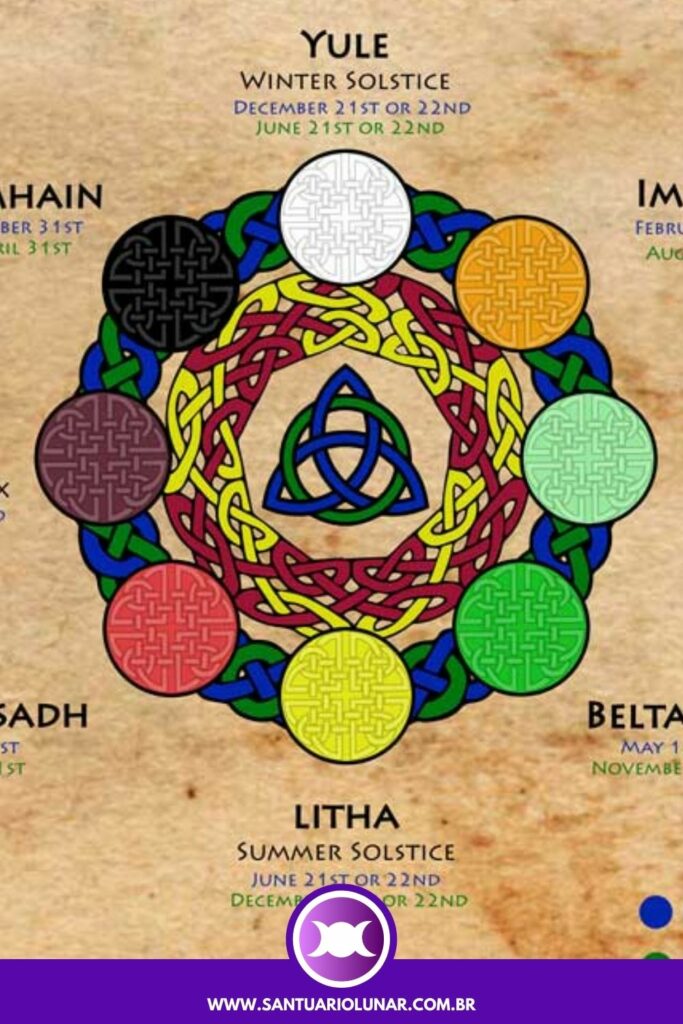The Wheel of the Year is a Pagan calendar in which you can observe eight different celebrations, and they are called the 8 Sabbats. Coming from the Celtic culture, the Wheel of the Year became very popular because of Wicca and is widely followed by Witches in Modern Witchcraft.
What is the Wheel of the Year?
The Wheel of the Year represents the cycle of life, death, and rebirth.
It represents the constant flow of energy. Through it, we follow the path of the Sun God and His relationship with the Goddess, through the 8 Sabbats. Each Sabbat denotes an event between the Sun God and the Goddess.
The Wheel of the Year is a Pagan calendar in which we can note the roots of various “modern” celebrations such as Easter and Christmas, for example.
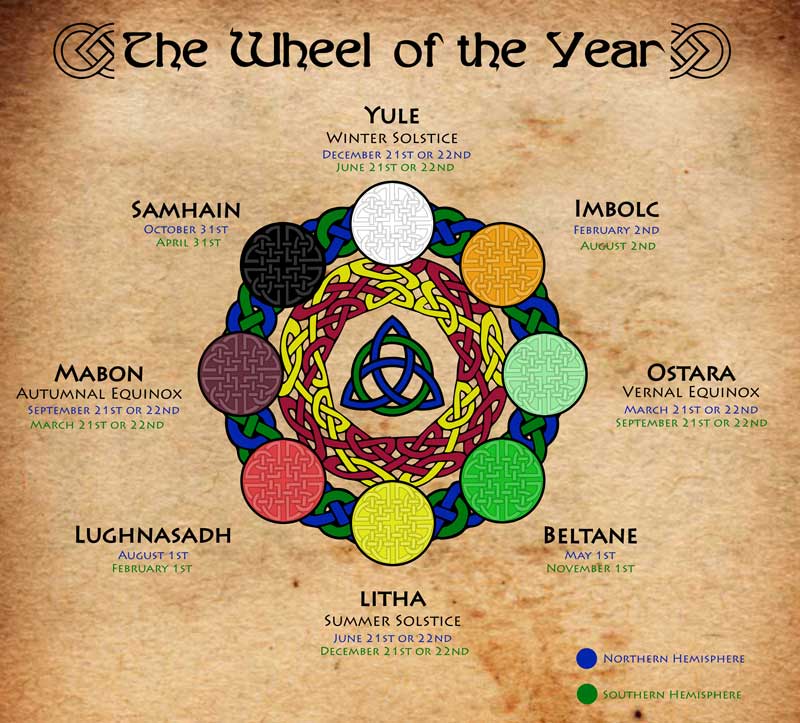
The festivities of the Wheel of the Year are usually made around a bonfire, with lots of food and joy. Each of them has a different purpose and meaning.
In the present day, it is common to set up an altar and hold the celebration around it. Many Solitary Witches make these celebrations within their own homes. Covens usually meet on specific dates for celebrations.
These are the dates for the Sabbats in 2024 for the Northern and Southern Hemisphere
| Sabbat | Northern Hemisphere date | Southern Hemisphere date |
|---|---|---|
| Imbolc | February 2nd | August 2nd |
| Ostara | March 20th | September 23rd |
| Beltane | May 1st | November 1st |
| Litha | June 21st | December 22nd |
| Lughnasadh | August 1st | February 1st |
| Mabon | September 23rd | March 20th |
| Samhain | October 31st | April 30th |
| Yule | December 22nd | June 21st |
The Wheel of the Year and the Sabbats – Free Ebook Download
Download our ebook with the content of this page and more, for free.
Touch the button below to visit the download page:
The Goddess and the God
The Wheel of the Year describes the God’s life from His (re)birth to His death. It also describes the Goddess’s life and all Her faces.
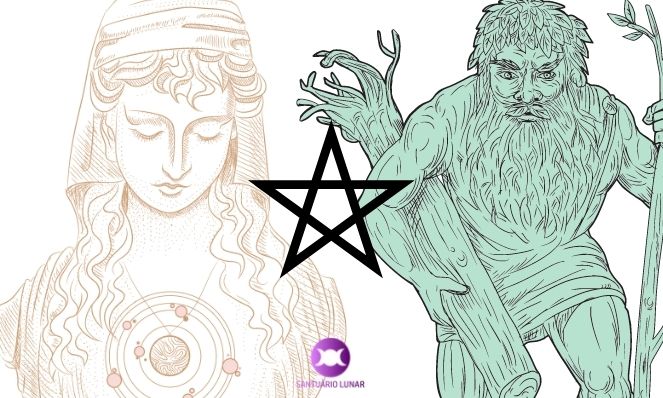
The Sabbat dates are intimately connected to the Solar position which, in its turn, reflects every phase of the God’s life.
The Yule Sabbat occurs on the Winter Solstice and represents the rebirth of the Sun God, for example. While the Ostara Sabbat occurs on the Spring Equinox and represents the revitalized energy of both the God and the Goddess.
Following the Wheel of the Year and observing the changes around us, it is possible to acquire a thorough knowledge and a deep understanding of nature itself and the magic that surrounds us.
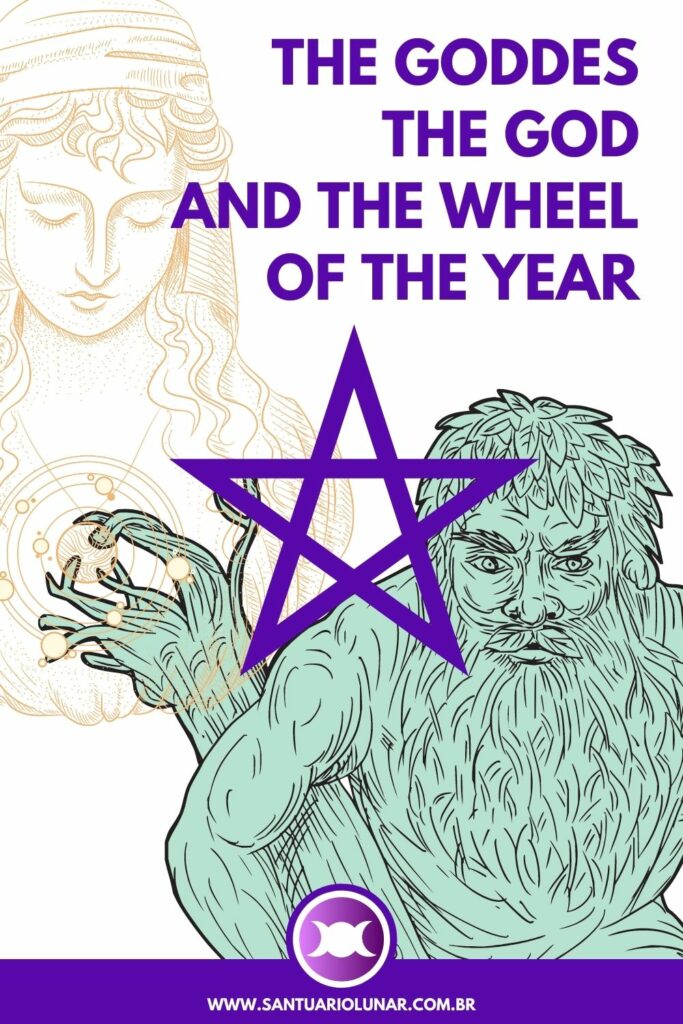
The Celtic Wheel of the Year or The Wiccan Wheel of the Year?
Both terms mean the same: The Wheel of the Year.
The Sabbats presented at the Wheel of the Year have their roots in The Celtic culture. That is why it is very common to hear the expression “Wheel of the Celtic Year”. There is a discussion that the Celts themselves did not celebrate such Sabbats, at least not with these names. In any case, each of them is connected to some aspect of their culture.
In many other ancestral cultures, we also see the celebrations of Solstices and Equinoxes, which immediately refer to the modern Wheel of the Year.
The term “Wiccan Wheel of the Year” is also quite popular since it was through Gerald Gardner in his Gardnerian Wicca that the Wheel of the Year, as we know it today, was spread.
If you want to get to know a little more about this discussion, I recommend reading the text The Wheel of the Year – Valid or Not? from the Pendragon of the Order of Bards, Ovates and Druids, and Damh the Bard. The opinions he expresses in the text are equivalent to mine.
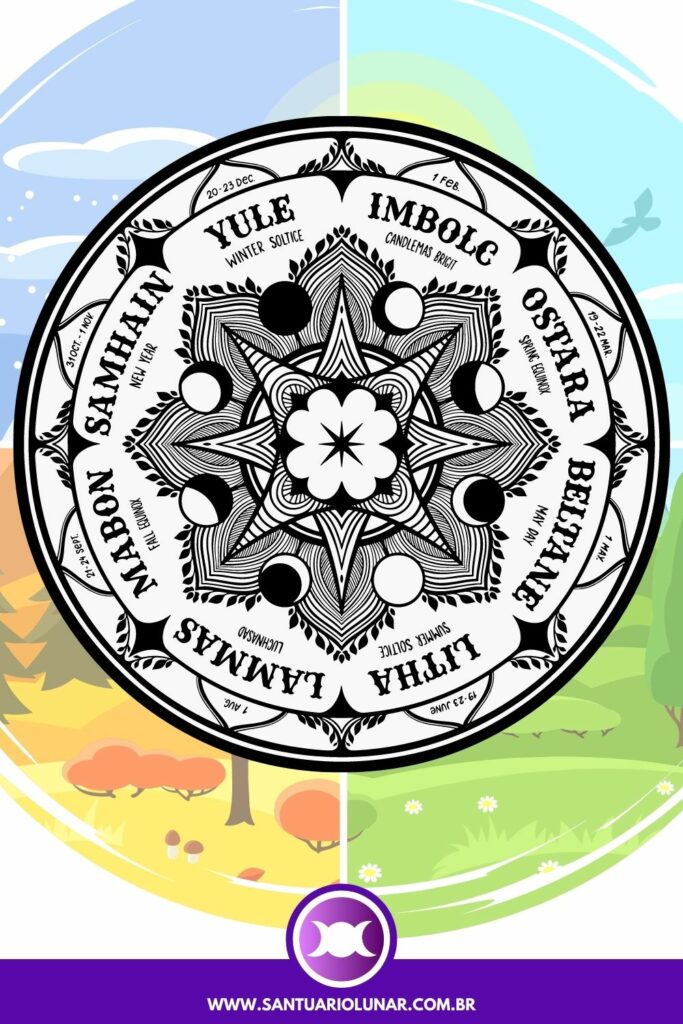
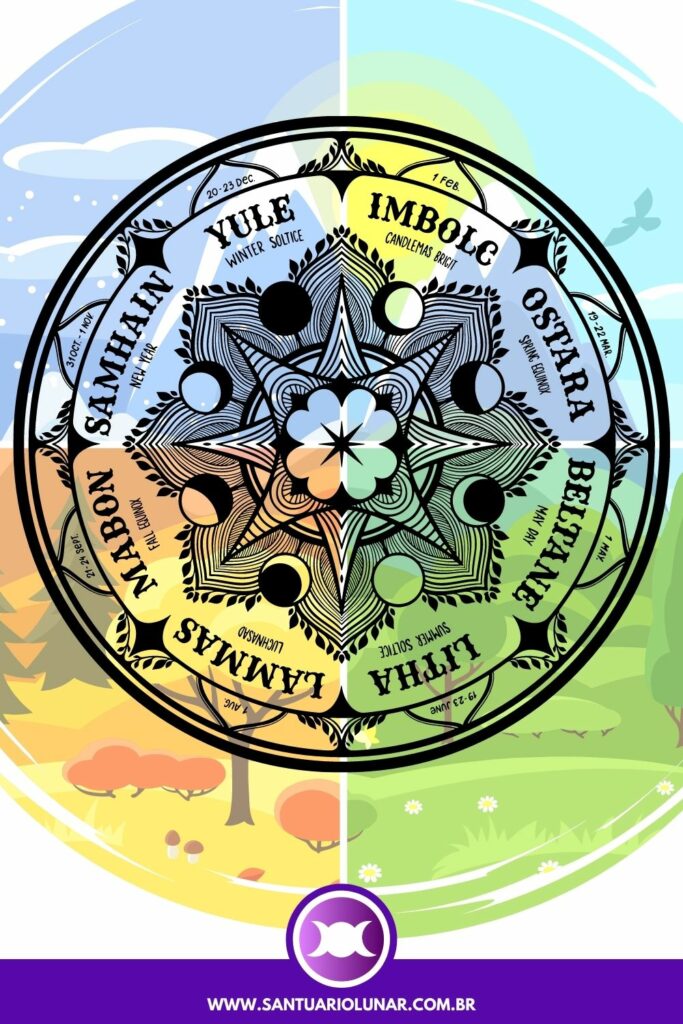
Northern and Southern Hemispheres?
As the main sources of witchcraft, as well as the leading modern authors on the subject, are from the Northern Hemisphere, the Wheel of the Year is, logically, all structured to the equivalent solar position of that hemisphere.
Each Sabbat represents a Solar position and a phase of the Sun God’s life. Therefore, as quoted above, The Yule Sabbat occurs on the Winter Solstice, when the Sun rises after a long period of darkness.
The dates of such celestial events in the Southern Hemisphere are reversed. While in the Northern Hemisphere Ostara is celebrated at the end of March, during the Spring Equinox, in the Southern Hemisphere Mabon is celebrated, the second and last harvest before Winter, on the Autumnal Equinox.
They represent different kinds of energy.
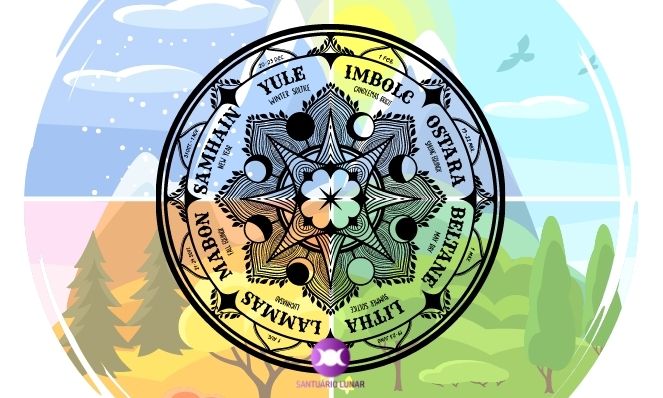
Spring is beginning in the Northern Hemisphere and then Summer is coming next. The energy of the Sun God gets stronger day by day. In the Southern Hemisphere, the Sun God is at the end of His life, ready to go away and leave the Goddess alone. Autumn is beginning and Winter is going to come next.
There are people from the southern hemisphere who prefer to follow the dates of the Northern Hemisphere. There are even those who celebrate what they call the “Mixed Wheel”, celebrating both Beltane and Imbolc at the same time, for example.
Some would say the most important thing is to celebrate nature.
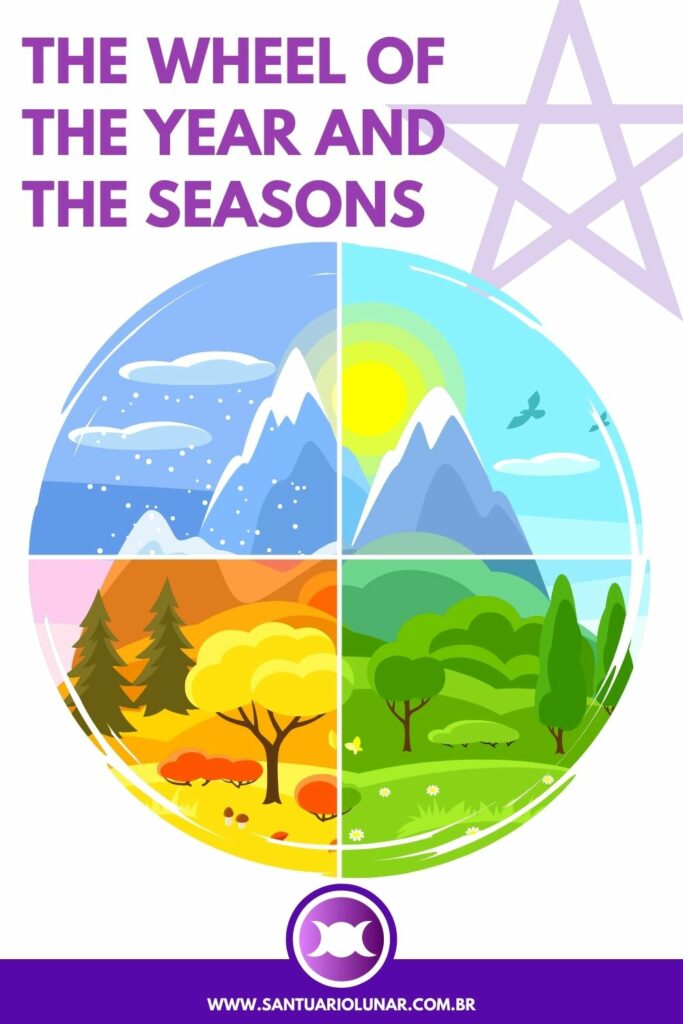
Meaning of Solstice and Equinox
Solstices and Equinoxes play a key role in the Wheel of the Year. It is through them and between them that the Sabbats occur. So we have 2 Solstices and 2 Equinoxes per year. Between each of them, we have some other celebrations, totalizing 8 Sabbats.
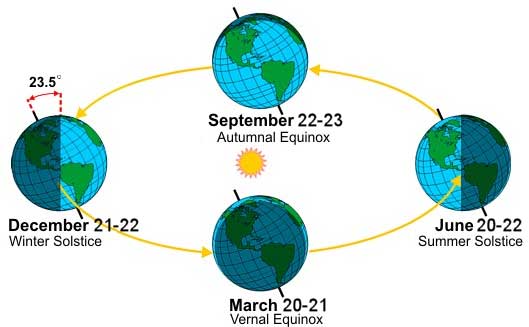
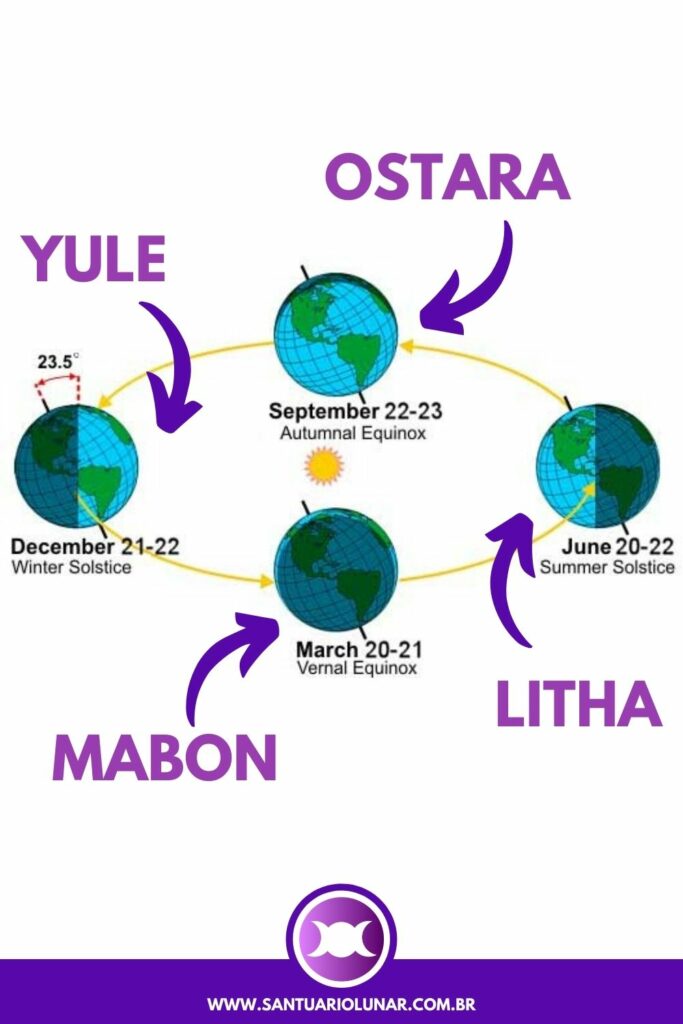
What is a solstice?
In scientific terms, a Solstice is a celestial event that marks the highest or lowest position of the Sun in relation to our planet.
On the Winter Solstice, the Sun is in its lowest position and tends to go up. When the Sun is on the Summer Solstice, its higher position, it tends to go down.
The corresponding Sabbat to the Winter Solstice is Yule. In the extreme northern position of our planet, it is common for some time, after the Autumn Equinox (Mabon), that the Sun begins to disappear, leaving the days darker and darker. It is in Yule that the Sun reappears and, from that on, it illuminates more and more.
Close to the Equatorial line this change is very subtle, resulting only in “it is getting dusk faster” or “the day is shorter”.
The corresponding Sabbat to the Summer Solstice is Litha. That’s when the Sun is at its peak. From that on it tends to get weaker.
What is an equinox?
Equinoxes, on the other hand, mark the Solar positions in which day and night have the same length.
On the Spring Equinox, the position of the Sun is going toward the Summer Solstice. It is at this time that the Earth is more fertile, favoring agriculture.
The corresponding Sabbat to the Spring Equinox is Ostara. The snow melts giving way to green again. The animals come out of their burrows and the plants bloom again.
On the Autumnal Equinox, the position of the Sun is going toward the Winter Solstice. It is at this time that the second and final harvest of what was planted in Ostara takes place.
The corresponding Sabbat to the Autumnal Equinox is Mabon. The Sun God is becoming weaker, and the leaves lose their greenish coloring and begin to fall from the trees. The last harvest is made.
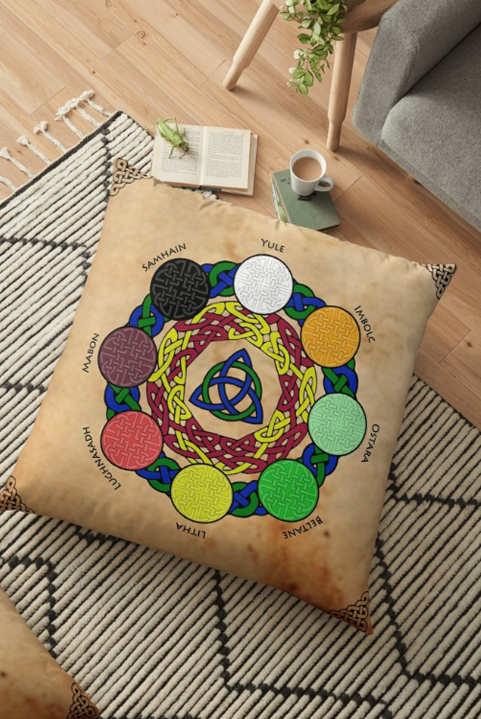
What do the Sabbat represent?
Each Sabbat of the Wheel of the Year has a different meaning and represents a different phase of the Sun God’s life and the Goddess’s life. Thus, witches work the energies of each Sabbat to cast powerful spells and also to celebrate them.
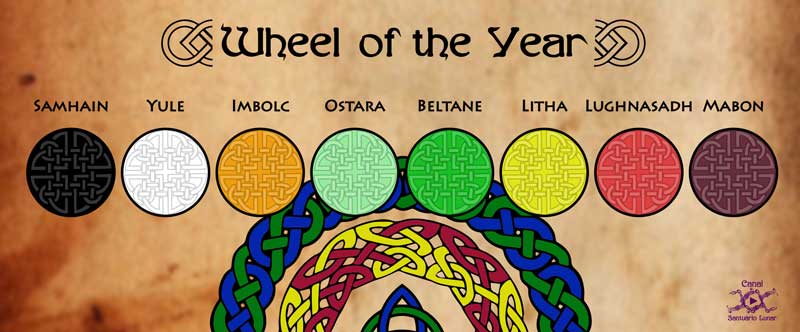
Right below you can find, briefly explained, what each Sabbat represents. You can access the individual post from each of them to read more and to see ritual tips for each Sabbat.
- Samhain Sabbat – Represents Death and Resumption. The Sun God is dead and the Goddess is in her Elder phase;
- Yule Sabbat – Represents the Rebirth of the Sun God on the Winter Solstice;
- Imbolc Sabbat – Represents the Growth of the Sun God. The Sun God is still a child and He is breastfed by the Goddess, his mother;
- Ostara Sabbat – Represents Life that returns to Earth; The Sun God and the Goddess are full of life and energy;
- Beltane Sabbat – Represents Fertility. The God and the Goddess are adults and with all energy flowing through them. The Earth is at its most fertile moment;
- Litha Sabbat – Represents Strength. The Sun God is at its peak. The plants are greenish and everything that was planted in Ostara and Beltane already begins to show signs of growth;
- Lughnasadh Sabbat (Lammas) – Represents abundance. The Sun God is anticipating His death. Much of His energy is donated to what is planted, ensuring the first harvest and the abundance of food;
- Mabon Sabbat – Represents Gratitude. The Sun God is already extremely weak. In Mabon, it is time to hold the second and last harvest of the year. The Earth, along with the Sun God, also does not show much strength. The leaves fall, and the plants dry.
Witchcraft Rituals on the Sabbats
The rituals of witchcraft done on each Sabbat vary, but they do have some characteristics that we can often notice:
- The presence of an altar dedicated to the Goddess and to the God;
- Typical food and drink of each season;
- Symbols related to the date represent the Goddesses and the Gods.
- Symbols that represent events common to the date;
Right below we can find, briefly explained, what type of witchcraft ritual is usually done on each Sabbat:
- Samhain Ritual – Samhain Rituals are made to honor our ancestors. As this Sabbat represents the end and the beginning of the Wheel of the Year, it is common for many witches and wizards to take it as the real “New Year”;
- Yule Ritual – Yule Rituals are rituals of thanksgiving and celebration of the rebirth of the Sun that will soon bring fertility to the Goddess and to the Earth;
- Imbolc Ritual – Imbolc Rituals celebrate the joy of the child that grows and brings the promise of a new era of fertility within himself;
- Ostara Ritual – Ostara Rituals celebrate the youth of the God and of the Goddess who fill the Earth with life and joy. The animals come out of their burrows and the plants bloom again;
- Beltane Ritual – Beltane Rituals celebrate fertility, the energy that can generate life;
- Litha Ritual – Litha Rituals celebrate the power of the Sun God, able to banish all evil;
- Lughnasadh (Lammas) Ritual – Lughnasadh Rituals celebrate the abundance and life of the Sun God which is found in all beings;
- Mabon Ritual – Mabon Rituals thank the energy of the Sun God and the Mother Goddess. In this Sabbat there is also the preparation for the forthcoming end and the new beginning in Samhain;
Conclusion
The Wheel of the Year is a Pagan calendar that points to the 8 Witchy festivities and the 8 Sabbats. Following it and celebrating it allows us to come into direct contact with nature.
In the present day when most of us live in large urban centers, being in touch with nature for the practice of witchcraft can be difficult. But with the Wheel of the Year, it becomes easy to observe the movement of the Sun God and to better understand the energies to which we can work. It’s a great way to connect with the Goddess and the God.
